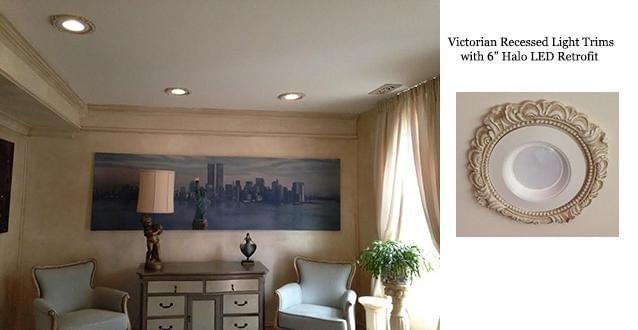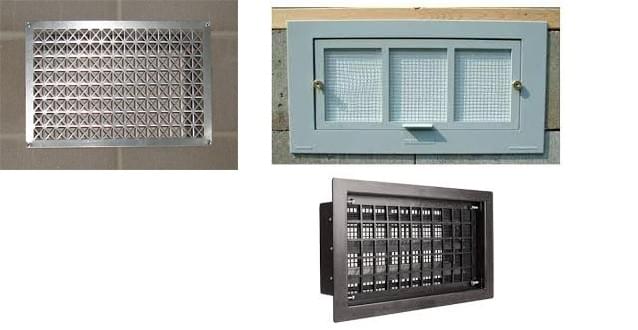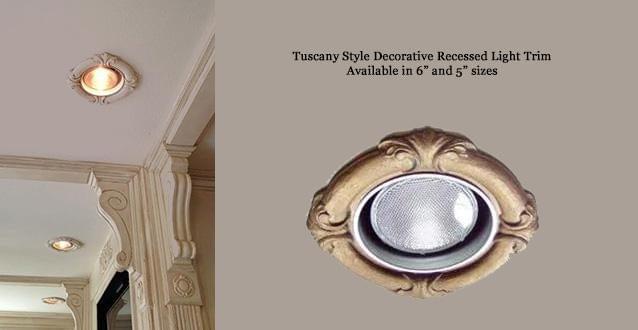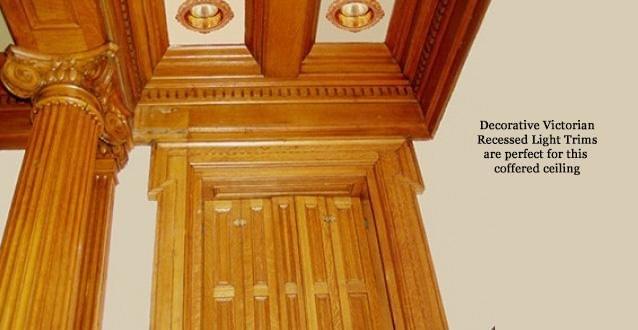This is the second installment of our recessed lighting fixture article. In Part One, you'll learn how to choose the best housing for your installation.
Housings and electronics are significant, but they fade into the background after everything is said and done. Trims and baffles, as well as reflectors, remain visible.
What are the things you can think about from an artistic standpoint?
The trim is normally the most noticeable part. It creates a seamless and trendy transition between surface and light by covering the point where the ceiling meets the downlight. The color and material should complement or balance the space. The easiest approach is to match the hue of the ceiling. A thin ceiling-matching trim will effectively camouflage your lighting while maintaining the focus on what your lights are illuminating rather than the ceiling. Alternately, you can make a trendy decorative fixture by changing the materials and colors. Depending on the intent of the light, trims will also help to highlight and focus it.
• Downlights are directed to the side and illuminate a wall with wall wash trims.
• If you need to change spotlighting or have mounted the downlight in a sloped ceiling, adjustable trims offer you the option of pointing the downlight.
• Pinhole trims help to keep light centered downward and avoid light leaks.
Recessed Lighting Trim
Reflectors refocus the light to increase illumination quality, while baffles absorb light to reduce glare. Both of them work to change the amount of light that your downlight emits. A reflector will direct more light out of the lamp to improve output, while a baffle will subdue output to give a smoother glow, whether you choose to use a regular shape, or A-shape, lamp.
Other trims may be strictly decorative, with little or minimal lighting effect. Some trims are sold as part of a complete downlight module, which means no bulbs or personalized options are available. Shower trims with a gasket seal are intended to keep moisture out of a lamp's circuitry. The trim should be chosen based on the intended use. A simple trim and reflector to disperse light over a wide area are suitable for general lighting, whereas a baffle can eliminate general glare. A shower trim or a trim with a UL wet or damp position rating can be used anywhere there is water vapor, such as above the stove or in a shower (or equivalent). When you want soft light reflecting off a wall, wall wash trims are ideal, and pinhole trim is ideal for spot-lighting under the downlight.
So, if you're installing something different before the ceiling is installed or retrofitting something into an existing ceiling, consider the lighting effect you want. For height, voltage rating, and insulation touch, choose the appropriate housing. Finish with the latest elegant lighting that emphasizes what's in the sun rather than attracting eyes to the source by finishing with decorative or functional trim.

Which recessed trim color can I use?
Recessed lighting is a tricky business. After all of your looking and selecting the ideal thing, you're left with one final decision: what color trim should I use?
Trim in white: For instance, since most ceilings are white, white is the most common trim color. And if you've opted to go with a color over your ears, an all-white trim is also the most straightforward to update with your preferred paint.
A crisp white reflector does a fantastic job of projecting light into the room. When the light is turned off, the fixture nearly disappears into a white ceiling.
Black Reflector: A black reflector eliminates glare from the downlight beautifully. Black absorbs some energy, much as any other contrasting color, and therefore decreases the lumen production marginally. However, many people love the look of black disappearing into the ceiling while the light is turned on or off. That's why it's one of the most ancient interior shades, dating back to the advent of recessed lighting.
Chrome Reflector: A chrome reflector performs an outstanding job of reflecting light and reducing glare. Chrome has been a common alternative because it is colorless. When turned off, it absorbs the colors of its surroundings and fades into the background. It looks dark from another room when it is turned on, even though it is projecting as much light as possible!
Haze Reflector: A haze reflector, like the black reflector, does a good job of eliminating glare. While the light is on, the reflector seems calm, and when the light is off, the haze is hardly visible. It isn't as smooth as other anodized finishes, but it isn't as easily scratched.
Black Trim: In all-black floors, such as nightclubs and restaurants, an all-black trim is commonly used. It may also be used to complement the hardware on wooden ceilings or to highlight the trim lines. The color of the ceiling trim has no bearing on the light output or color of the light. The aim is to illuminate the room without attracting attention to the lighting fixtures in these cases.
Bronze Trim: Bronze trims, including black trims, are used to complement the background colors of the wood or the darkness of the ceiling in certain wooden ceilings. These are particularly appealing in a rustic setting, such as a mountain cabin.

Architect Oliver Freundlich's Expert Advice: 5 Things to Know About Recessed Lighting
Bad lighting will ruin the mood in every house, no matter how well-designed it is. Recessed lights can help, but they can also transform your roof into Swiss cheese and cloak your quarters in dim light if not used strategically. John Gibson, a Remodelista reader, asked us to explain this "useful but sometimes too poorly implemented method" a while back. New York architect Oliver Freundlich, one of our favorite artists, told us he is regarded in his office as the Lighting Dictator and will be delighted to direct us. Here's what he has to say about it:
Recessed lighting aims to enhance the environment's brightness while also adding interest and ambiance. Layering the lighting is crucial in this regard: To make rooms feel balanced and welcoming, combine recessed lighting with several other styles (such as decorative pendants, table lamps, sconces, and candles). This is true in both contemporary and traditional environments, such as old townhouses, were carefully positioned recessed lights will work wonders.
Where do I begin? Here are my important recessed lighting ideas, gleaned from years of experimentation and collaborations with master lighting designer Marianne Maloney of Filament 33.
1. Use light to wash the wall, not the floor.
Recessed lighting is used in a variety of configurations. A wall washer is a light fixture that is usually mounted 18 to 24 inches from the wall (depending on ceiling height) and used in a series to scatter light over a wide area. As light is bounced into space from a vertical surface, it produces a clear impression of illumination: you note the wall rather than the fixture.
2. Draw attention to art and artifacts.
Introduce a spotlight (or a few) to orient the eye instead of blanketing a room with an even grid of illumination. Spotlights, unlike wall washers, attract your focus to a particular moment inside a space with their narrow beams. Installing spotlights over a porcelain sink and bathtub, for example, makes the fixtures sparkle and pop.

3. Pick the required trim type.
We're both mindful that the devil is in the details. Recessed lighting comes in a variety of trim and aperture choices, and selecting the right ones will make even the most unobtrusive ceiling lights feel considered and polished. Metal finishes on high-end fixtures complement wood ceilings beautifully. Install flangeless fixtures that are plastered onto the ceiling to appear smooth for more lightweight applications: The only thing visible in the ceiling plane is an origami-like cutout.
4. Check the color of the bulb (and aim for warmth).
Light bulbs aren't always made together. Incandescent and halogen lamps also have a soft glow that I enjoy. While there are many excellent recessed LED suppliers now, it is still essential to verify the color content of their LEDs before making a purchase. I consider using the warmest LED available for residential applications (typically +/- 2700k). This comes close to matching the consistency of halogen lighting, but it's not quite there. Be aware that the lighting level of some of the more inexpensive LED lights varies greatly, and you can see varying colors of light from one fixture to the next.
5. Install dimmer switches in your home.
If you take nothing else from this article, add a dimmer on (almost) every light fixture in your house. It's critical to be able to change the strength of lighting (especially overhead) depending on the mood you want to achieve. This is critical for more than just your entertainment places. Dimmers can be used for all bathroom fixtures, under-cabinet lighting, and even walk-in wardrobe lighting (think about relaxing in the tub). Another advantage of using dimmers is that by dimming a lamp except by 10%, the bulb's life is extended. Electronic low-voltage (ELV) dimmers, rather than traditional magnetic low-voltage dimmers, are typically used for LED lamps. Before choosing a dimmer control, make sure you know what kind of transformer is inside your recessed fixture.

Besides, here are four lighting brands that we recommend:
• The holy grail in high-end recessed lighting is No. 8 Lighting. Take a look at the trimmings.
• Element: Tech Lighting's LED fixtures have excellent color quality and are equivalent in price to a good-quality halogen recessed lamp.
• USAI recessed Lighting: USAI has lovely flangeless trim choices for both halogen and LED recessed lighting, similar to Element in terms of offerings and price point.
• Halo: A less costly brand that can be found at major retailers such as Home Depot. While the apertures are not as wide as those offered by the above manufacturers (five inches instead of three), the light output is fine, and the prices are hard to beat.

Recessed Lighting Trims And Lights
The largest range of recessed can light and recessed lighting trim is available at RelightDepot. Apertures of 3", 4", 5", 6", 7", 8", 9", and 10" are available for recessed can lights and trim. They are also available with square apertures and a variety of light sources. Use the can light trim to illuminate special focus areas in the space, or use the recessed cans to provide unobtrusive general recessed lighting. The frosted lenses scatter light uniformly, allowing for a warm addition.
In kitchens, where there is a lot of light, LED recessed lighting trims are popular. Recessed light trims installed in the ceiling work well in places where chandeliers or large lampshades are not appropriate.
Recessed can lights are often built with insulated ceiling space and moisture resistance in mind. They're ideal if you want to add chic lighting to your kitchen, dining room, or office without using a highly noticeable light fixture. Recessed can lights are ideal if your room needs a lot of light but you don't want to clutter the ceiling with light fixtures, or if your ceiling space is limited due to a swinging door!
If you require some assistance deciding between recessed can lights and LED recessed light trim, please contact us and a member of our friendly team would gladly assist you!
Additional Resources:

